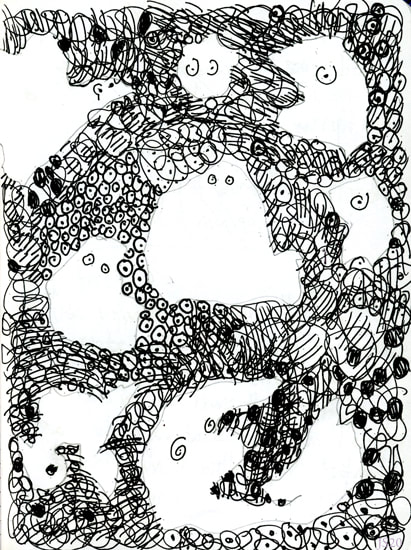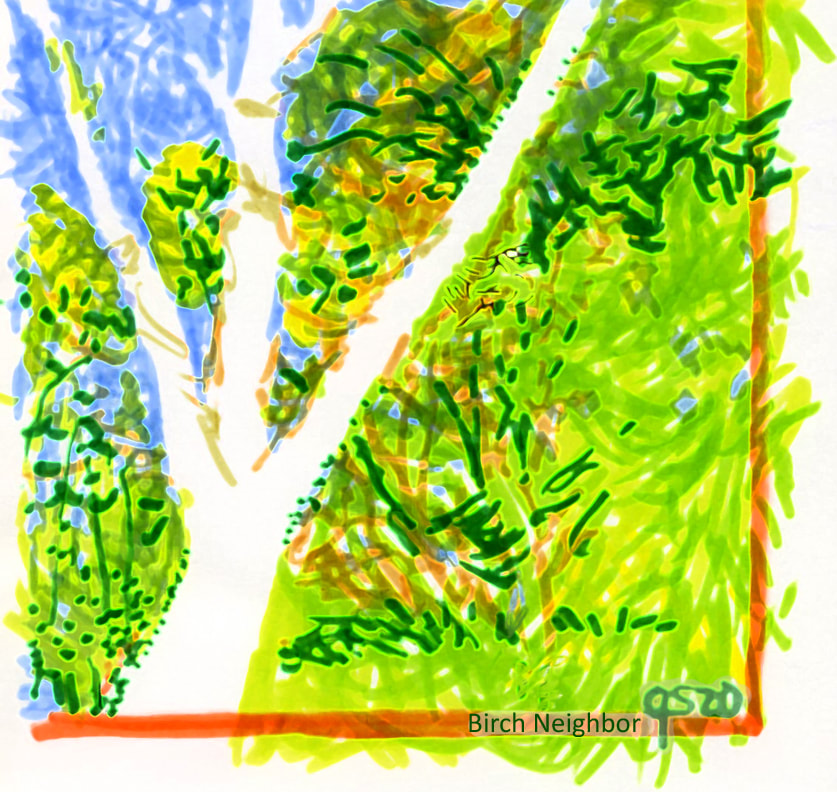Practice Suggestions
Noticing
1). Can you feel the support of the ground now, through your feet and your whole body? Can you sense the constant of gravity anchoring you to this present place and time? What does it feel like to attune to the spaciousness behind, below and all around you?
2). Explore the habit of mentally defining, identifying and labeling things. Try greeting whatever you see by bestowing a simple one or two word name on it. Watch how strings of association and story could spool out from identifying any thing. Gently withdraw attention from mentally traveling to what's not here. Step back to plain naming, that ancient creative play of attaching verbal tags to what you see.
What's it like to mentally step back further, to seeing what's here before, during and after naming anything? Witness the unnameable realness of the world that is 'too full to talk about' (Rumi).
3). As you walk around looking, become aware of the play of background and foreground as your attention settles on one aspect of the scene and then moves to another. See how the thing you noticed (say, leaf shadows) meets what surrounds it (say, the bright patch of not-shadow) and how they define each other visually.
1). Can you feel the support of the ground now, through your feet and your whole body? Can you sense the constant of gravity anchoring you to this present place and time? What does it feel like to attune to the spaciousness behind, below and all around you?
2). Explore the habit of mentally defining, identifying and labeling things. Try greeting whatever you see by bestowing a simple one or two word name on it. Watch how strings of association and story could spool out from identifying any thing. Gently withdraw attention from mentally traveling to what's not here. Step back to plain naming, that ancient creative play of attaching verbal tags to what you see.
What's it like to mentally step back further, to seeing what's here before, during and after naming anything? Witness the unnameable realness of the world that is 'too full to talk about' (Rumi).
3). As you walk around looking, become aware of the play of background and foreground as your attention settles on one aspect of the scene and then moves to another. See how the thing you noticed (say, leaf shadows) meets what surrounds it (say, the bright patch of not-shadow) and how they define each other visually.
Drawing
Play with defining shapes, features and things by giving attention to the space around them. Use patterns of marks that vary.
Play with defining shapes, features and things by giving attention to the space around them. Use patterns of marks that vary.
Other Media
Check out how you arrange a garden bed, a plate of food, things on a table. Play with awareness of the space around and between items.
You could write about something or someone describing them by what they are not like.
Where does your curiosity nudge you to practice with this kind of shift of awareness?
Check out how you arrange a garden bed, a plate of food, things on a table. Play with awareness of the space around and between items.
You could write about something or someone describing them by what they are not like.
Where does your curiosity nudge you to practice with this kind of shift of awareness?
Attune
We all have deeply grooved habits of vision, so useful for life in Earth School (as Byron Katie calls it)--skills like the ability to pick things out from their surroundings and identify them. Just noticing how skillful your habits are can help loosen fixation on them and open your mind's eye to a fresh view that sees parts integrated into the whole.
There's something magic and alive about this shift of attention to a more inclusive mode, dancing foreground and background around, seeing things and the space around and between them at the same time.
There's something magic and alive about this shift of attention to a more inclusive mode, dancing foreground and background around, seeing things and the space around and between them at the same time.





 RSS Feed
RSS Feed
